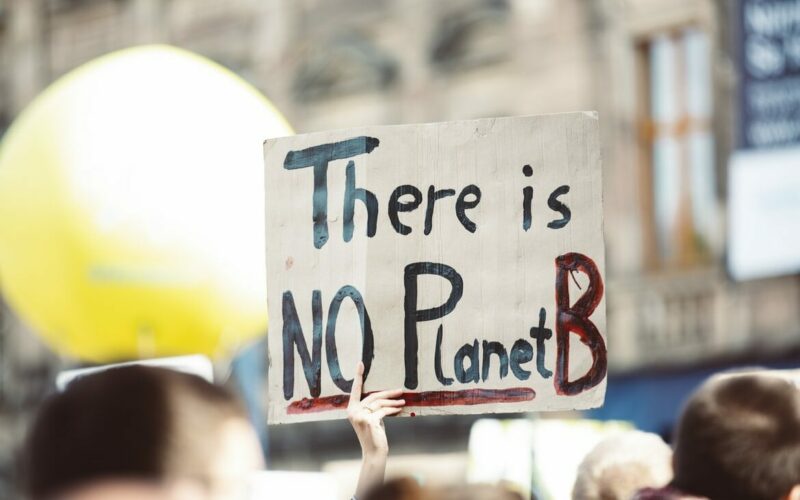The deniers at The Australian with their faux commitment to climate change. Part 1
Oct 21, 2021
Not so fast with the good news. To avoid disaster for the planet, we need tougher measures. Nothing short of embracing a war footing will be enough.
Suddenly the stars have aligned behind climate action, apart from some black holes over Queensland. The prime minister travelled to New York last month to receive the News Corp blessing to commit to a target of Net Zero Emissions by 2050 (NZE2050). Coincidentally, News Corp Australia miraculously pivoted to the same target, presumably due to some Road to Damascus experience on the part of their tabloid editors. Albeit after a couple of weeks’ silence, the big gun deniers in The Australian were allowed off the leash, with their faux commitment to climate action countered with every possible excuse why it should not occur, so matters did not get too far out of hand.
Momentously, after a quarter century of denial, using every trick in the book to prevent or slow climate action, both the Minerals Council of Australia (MCA) and the Business Council of Australia (BCA) committed to NZE2050, with the BCA going further in calling for a 50 per cent emission reduction by 2030.
Impressive stuff. The mainstream media waxed euphoric over the foresight and vision of Australia’s corporate leaders. Which gives further cover for the prime minister to demand compliance from his junior Coalition partner given that the big political donors have spoken.
So climate problem solved; what could possibly go wrong? Well, a great deal.
Trust in the vision of our leaders has to be earned, particularly given the toxic history of climate change policy. It does not just magically appear because News Corp, the MCA and BCA have spoken. The last time the stars were so aligned was in 1999, when the key players publicly supported the first Australian emission trading proposal, while successfully undermining it behind the scenes. Which set in train the long, sorry history of Australian climate denial that continues to this day.
Close examination of the BCA’s 90-page glossy brochure suggests that not much has changed. First, the study states that: “The science tells us that to avoid catastrophic climate change average global warming must be limited as close to 1.5 degrees Celsius by 2050 and below 2C. This means achieving net zero emissions by 2050 globally.” The plan, along with the 46–50 per cent emission reduction target by 2030, is structured accordingly.
The scientific basis for that statement is not clear. In reality, the science from our own analysis, the IPCC and many other sources increasingly emphasises that 1.5C is now inevitable by 2030, that climate tipping points may well be triggered between 1.5–2C, and hence to avoid catastrophic climate change net zero emissions must be achieved far sooner that 2050, ideally by 2030.
Further, to restore a stable climate, not only must emissions be reduced rapidly, but current atmospheric carbon concentrations must be drawn down from the current 420ppm CO2 to around 350ppm CO2, a requirement totally ignored in the Australian debate. Technology to do this at scale is not yet available, compounding our risk exposure. A vastly different task from anything currently contemplated officially, necessitating mobilisation akin to wartime.
A core responsibility of company directors is to objectively assess the risks confronting their organisations and to act to manage those risks. That has not happened. BCA and MCA member companies pride themselves on technical excellence and risk management, and have access to the best possible scientific advice.
The least that might be expected from their dramatic realignment is for it to be based on a comprehensive risk assessment. Something that has never been done in this country, not least because political and corporate leaders did not want, and still do not want, to know the facts lest it highlighted their failure of leadership.
That risk assessment has to be the foundation on which realistic targets and plans are based, otherwise we are fooling ourselves. NZE2050, even with a 50 per cent emission reduction by 2030, is soft denial, kicking the can down the road for other generations of leaders to deal with, in the process accepting a high risk that catastrophic climate impacts will be triggered in the next 10 to 20 years.
The BCA plan itself heightens those concerns. It relies extensively on technologies which are yet to be proven at scale, particularly geological carbon capture and storage (CCS) and a “deep and liquid domestic carbon offset market to efficiently balance abatement activity between the easy to abate and hard to abate sectors of our economy”.
CCS has worked in the oil and gas industry for decades, reinjecting CO2 produced during oil and gas extraction back into the reservoirs from which it came, often profitably increasing oil and gas recovery; a process known as enhanced oil recovery (EOR). But those reservoirs are limited, and rarely near to the point of emission.
Injecting CO2 into non-oil and gas reservoirs has proved far more problematic with most major projects over recent years failing, mopping up billions of taxpayer dollars globally in the process.
It is technically difficult, as problems with the WA Gorgon project demonstrate, and there is no economic benefit as with EOR projects. The economics are made worse by the lack of a price on carbon which is politically anathema despite it being the most effective means of reducing emissions.
Read part two of this article here.




